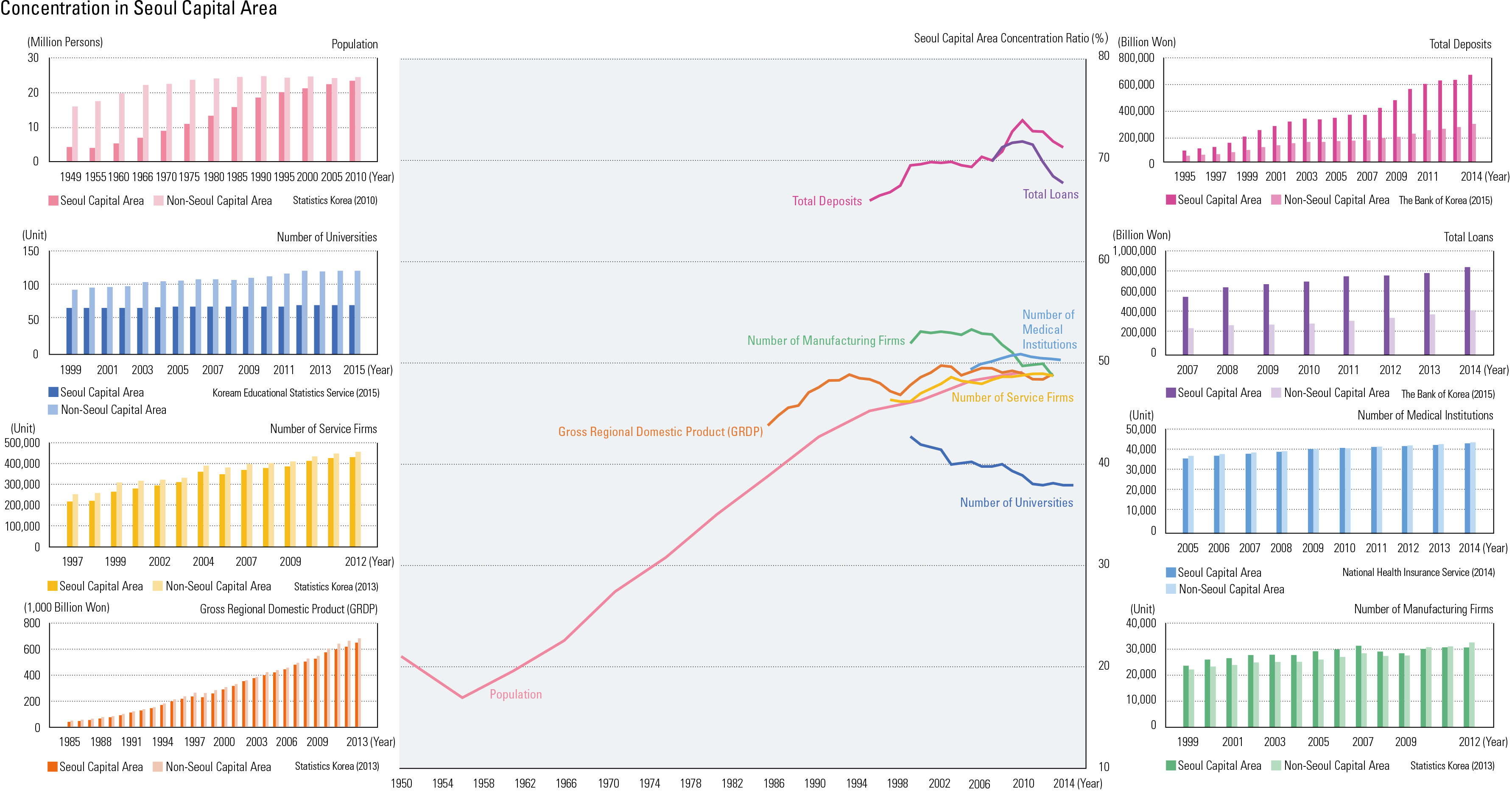English III
In 1960, the population of the Seoul Metropol- itan Area was approximately 20.8% of Korea’s entire population. Thirty years later in 1990, the share more than doubled to 42.8%, and by 2010, it reached 48.9%. Almost half of Korea’s entire population now lives in the Seoul Metropolitan Area. In addition, most socioeconomic indicators such as gross regional domestic product (GRDP), number of businesses, and number of service firms show that the Seoul Metropolitan Area accounts for 50% of the entire country. Further- more, the concentration of financial services— total deposits and total loans—far exceeds 50% and is almost 70%. Approximately 40% of higher education institutions are located in and around Seoul. Since the 1960s, the Korean Government has pursued policies to mitigate the concentration of people and capital in the Seoul Metropolitan Area, and has promoted policies re ecting more balanced development. Policies to prevent over- crowding in metropolitan areas were adopted in the 1960s, followed by policies to reduce con- centration in the Seoul Metropolitan Area in the 1970s. Despite these efforts, people continued to move to Seoul well into the 1980s. In 1982, the “Seoul Metropolitan Area Readjustment Planning Act” was enacted, followed by the First Capital Region Readjustment Plan (1984 – 1996) in 1984—both of which provided a comprehen- sive development framework with legal binding force. In the 1990s, Korea’s territorial plans were amended as the autonomy of the local govern- ments was restored. In this context, the First and Second Capital Region Readjustment Plans were announced, in 1994 and 1997, respectively. As the Second Capital Region Readjustment Plan (1997 – 2011) was approved and introduced, new ideas about planning and development were emerging, and the Third Capital Region Readjustment Plan (2006 – 2020) was prepared well before the target year 2006. This plan heeded calls for deregulation and brought about a paradigm shift in local devel- opment.
page_2 |
